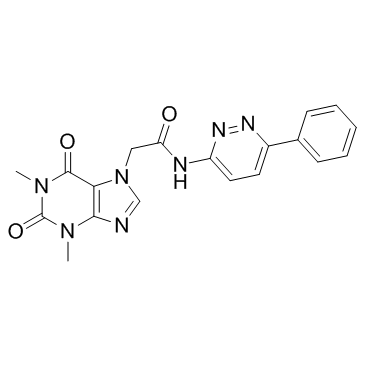| Description |
ETC-159 is a potent, orally available PORCN inhibitor. It inhibits β-catenin reporter activity with an IC50 of 2.9 nM.
|
| Related Catalog |
|
| Target |
IC50: 2.9 nM (β-catenin)[1]
|
| In Vitro |
ETC-159 blocks the secretion and activity of all Wnts. ETC-159 has robust activity in multiple cancer models driven by high Wnt signaling. ETC-159 is highly efficacious in molecularly defined colorectal cancers (CRCs) with R-spondin translocations[1]
|
| In Vivo |
ETC-159 inhibits mouse PORCN with an IC50 of 18.1 nM, whereas the IC50 for Xenopus Porcn is approximately four fold higher (70 nM). ETC-159 is remarkably effective in treating RSPO-translocation bearing colorectal cancer (CRC) patient-derived xenografts. ETC-159 exhibits good oral pharmacokinetics in mice allowing preclinical evaluation via oral administration. After a single oral dose of 5 mg/kg, ETC-159 is rapidly absorbed into the blood with a Tmax of ~0.5 h and oral bioavailability of 100%[1].
|
| Cell Assay |
HEK293 cells stably transfected with STF reporter and pPGK-WNT3A plasmid (STF3A cells) are treated with varying concentrations of compounds. For Wnt secretion, STF3A cells are treated with ETC-159 diluted in 1% fetal bovine serum-containing media[1].
|
| Animal Admin |
Mice: For human xenograft models, patient-derived solid tissue fragments are subcutaneously implanted in BALB/c nude mice. All groups are matched for tumor size with equal variance before treatment. ETC-159 formulated in 50% PEG400 (vol/vol) in water is administered by oral gavage at a dosing volume of 10 μL/g body weight[1].
|
| References |
[1]. Madan B, et al. Wnt addiction of genetically defined cancers reversed by PORCN inhibition. Oncogene. 2015 Aug 10. doi: 10.1038/onc.2015.280.
|
